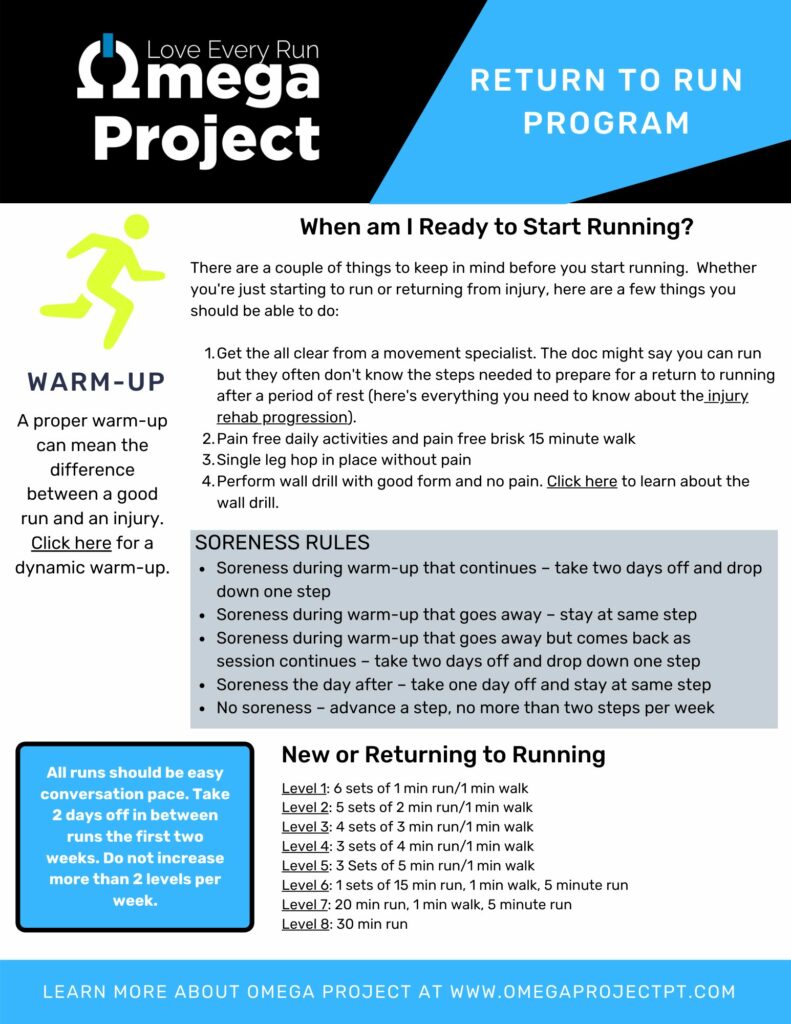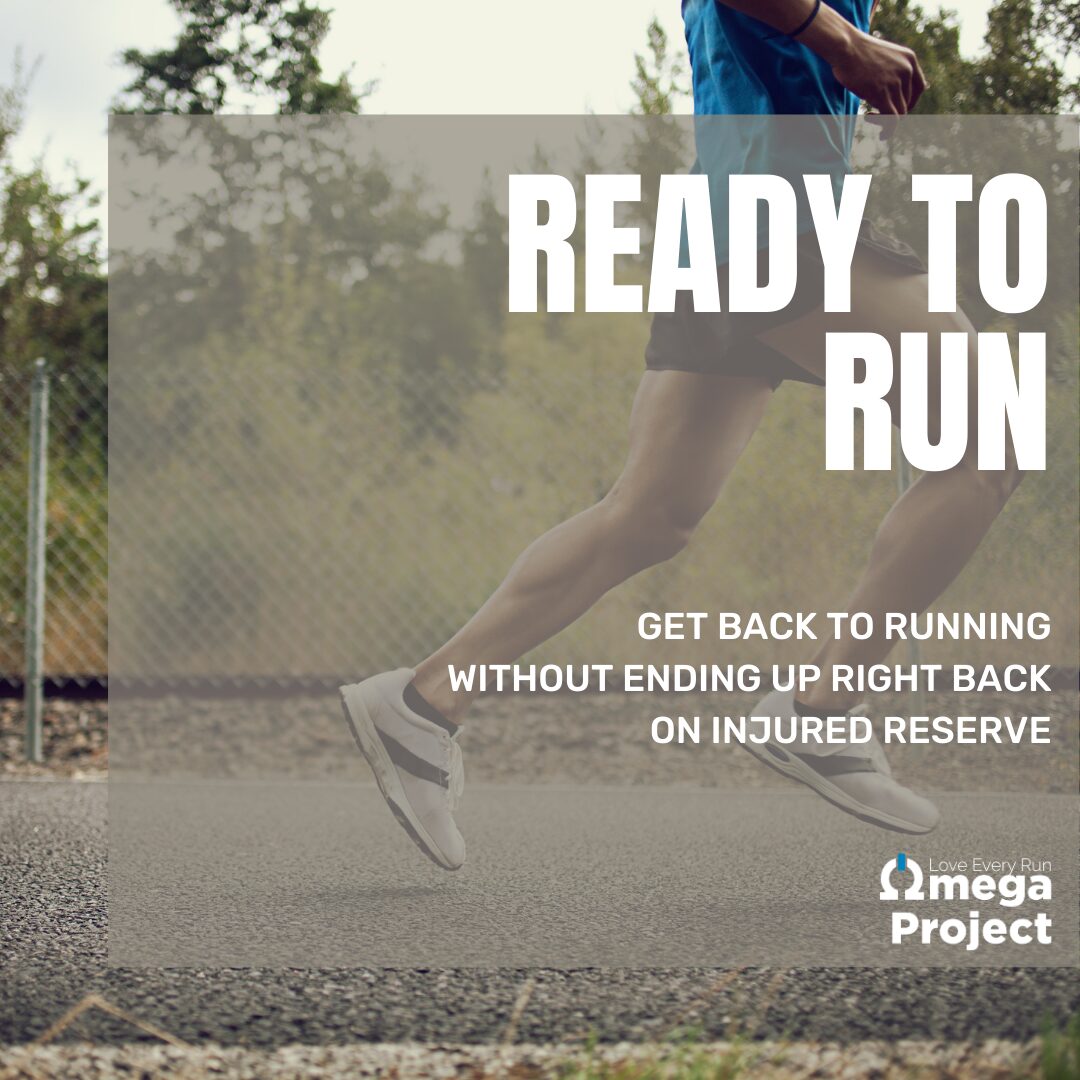Mobility ✔️
Movement pattern ✔️
Strength ✔️
Load Progression…TIME TO RUN!
It’s finally here, the moment you have all been waiting for…so put on those running shoes and hit the road, RIGHT?
WRONG…So often we get excited about the progress we have made through rehabilitation, that we think we should just be able to hit the ground running again (pun intended). However, just like we wouldn’t suggest that someone return right from ACL rehab to playing soccer on the field, the same applies to running.
There must be a graded progression to ensure safe and effective return to ANY sport (running, soccer, swimming, etc).
This is why we have a running progression. It is a graduated return to running that allows you to progressively load your injured joint/body in a way that should help prevent recurrent injury. Often we see runners go from injured and not running for a period of time to running 2-3 miles straight. The result is commonly recurrent pain/injury, which is frustrating and discouraging to any athlete. Our bodies simply aren’t built to go from 0 to 100 overnight, so let’s consider a safe and more effective way to get you back on the pavement (or treadmill or trails, whatever your preference).
To answer a few common questions:
- How do I know when I’m ready to start running again?
- This is a decision that should be made (often with the help of a PT or MD) based upon symptom irritability, healing time frames, post-operative protocols (if applicable), and your ability to take a brisk 15 min walk pain-free.
- Another great way to assess readiness to start the running progression is performance a single legged hop pain-free and performance of the Wall Drill without pain and with proper form.
2. Do I need to be pain-free if I am going to start running again?
You should always be pain-free at rest and with walking if you plan to start running again. You may still have mild pain/soreness with strengthening/loading activities, but pain levels should be mild and improving. As you begin the running progression, consider the soreness rules as outlined in the attached return to run program.
3. What do I do if I have some soreness with the running progression?
As you work through the running progression, please follow the soreness rules as shown in the attached return to run program. Again, the benefits of following this program are that you don’t have to go back to those awful “2 weeks of rest” if soreness or pain pop up.
4. How quickly should I progress through the return to running progression?
You should never progress more than 2 levels per week (even if you feel great!).
5. What else can I do to ensure a healthy return to running?
- Continue to work on the exercises needed to address your mobility, movement, and strength. It is highly recommended to see a professional so you can find out what these needs are, instead of following a general program.
- Get a 3D Gait Analysis – The perfect time to work on making changes to your gait is when you first start running again. You can do all the stretches and strengthening you want, but it likely won’t change the movement pattern you’ve been using for years. There are simple steps we can take to help you improve your form, decrease injury, and improve performance.
- Implement plyometrics – We will talk about a plyometric progression in an upcoming Quick Tip!
Download the Return to Run Program Here!


